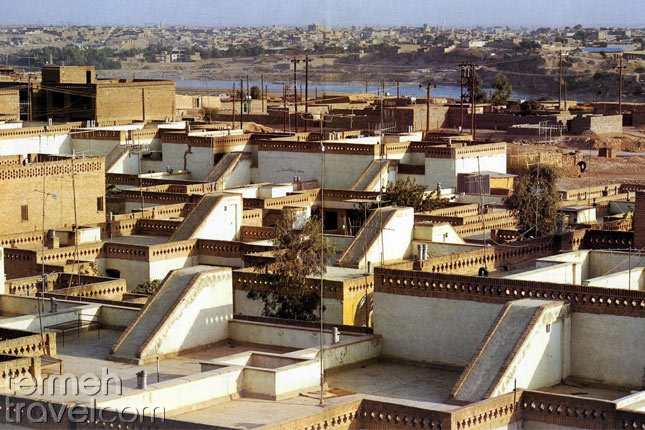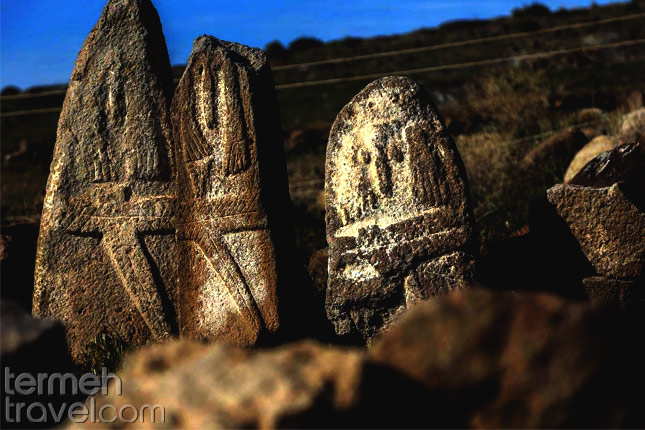The unique shape of moss-covered structures made of clay and the sound of water flowing inside the old tunnels detaches you from the spacetime to find yourself inside an ancient labyrinth. Visiting the Shushtar Historical Hydraulic System, you keep asking yourself how human beings, living thousands of years before the industrial revolution, were able to not only come up with the idea of making this massive structure but also build one. Was the limited knowledge of people at that time enough for this advanced hydraulic system?
If only you had a time machine, you could travel through time, go back to the Achaemenids era, and see how Iranians showed their ingenuity and started building the Shushtar Historical Hydraulic System with the most basic materials and no advanced tools.
Table of Contents
The History of Shushtar Historical Hydraulic System
During the 5th century B.C, when the Greek philosophers were changing the world with their ideas and the poets were showing the power of Greek gods and goddesses to people, the curious mind of King Darius in Persia was looking for a way to make the most out of the water sources in Shushtar.
Besides the glamourous Persepolis and elegant Parseh, the Persian architectures living in Achaemenid Dynasty created a unique, majestic, and well-engineered structure.
Although the Shushtar Historical Hydraulic System was built during the Achaemenid Empire, this structure was reconstructed many times in the Sassanid and Qajar Dynasty. From ancient Persia, until today, this amazing structure stands strong, irrigating fields and farms in the city of Shushtar.
Where is Shushtar?
Shushtar is a beautiful city located in Khuzestan Province in the south of Iran. According to Abbas Moqaddam, who is an Iranian archeologist, the history of this city goes back to more than seven thousand years ago, which makes it one of the oldest cities in Iran and even the world. The existence of the Karun river near Shushtar is the main reason that makes this city a perfect place for inhabitants.
Although being located in the south of Iran, makes the weather of Shushtar extremely hot, the fertile plains and the freshwater of Karun was more than enough for agriculture.
The fascinating structure of Shushtar Historical Hydraulic System and different dams in Shushtar made people of the city blessed with harvests.
How Does the Shushtar Historical Hydraulic System Work?
During the Sassanid Empire, the Shushtar Historical Hydraulic System started to irrigate the lands. The human-made Gargar river made by Ardeshir Babakan, who was the founder of this dynasty, was supposed to help the agriculture by carrying the water from the east to the west. By using the irrigation system that remained from the Achaemenid Empire and expanding it, the goal was reached.
On the other hand, the water should have been guided from the Karun river toward the complex. Then, the structure could keep the water behind the Gargar dam, flow it through water mills and finally let the tunnels bring the water and make it fall like gorgeous waterfalls inside a pool to allow people to use it as the freshwater and water supply for their fields.
What Are the Different Parts of the Shushtar Historical Hydraulic System to Visit?
Different parts of this outstanding complex are individually unique and definitely worth visiting. By exploring each structure, you can realize how they are wonderfully designed and how they can work well together as a system, in order to reach their primary goal.
Salasel Castle
When you walk among the ancient tunnels and corridors, you can watch the waterfall into the pools and let the fresh scent of the sea play with your imagination, while the remains of the castle testify the glory of the Achaemenid Empire. Although there is not much left from this castle, due to the heavy rain and flood happening about 58 years ago, the archeologists could tell how amazing the Salasel Castle was. This castle was used as a fortress to keep Shushtar safe from the attacks and also served as the home of Shushtar’s ruler.
Mizan Weir
Mizan Weir or Band-e Mizan looks like a massive boat floating on the water. The history of this structure goes back to the beginning of the Sassanid Empire, and it was used to divide the water of Karun and keep water behind the dam. The value of this weir is undeniable, and its destruction can bring poverty, misery, and hunger to the people of Shushtar.
Mahi Bazan Weir
Where the Gargar River flows toward the Shushtar Historical Hydraulic System, a natural phenomenon called Mahi Bazan Weir can captivate you. The locals call this weir Band-e Khoda Afarin, which literally means the weir made by God. This stone string, which is made of sands, helps the water flow stronger; therefore, some fascinating shapes have been created. While building the complex, the Persian architects in ancient times could find the best usage of it and keep it safe for us today.
َSharabdar, Borj-e Ayar and Khak Weir
In the Persian language, Sharab means wine, so naming this weir Sharabdar was because of the many vine gardens in the area. Sharabdar and other human-made weirs were built on the Gargar river to guide the water toward the complex and help it stay behind the dam. Their history goes back to the Sassanid Empire and shows their ability in engineering once again.
Kolah Farangi
Kolah Farangi is one of the main aspects of Persian architecture in making elegant pavilions. The Kolah Farangi of Shushtar is the remains of a majestic polygon tower near Mizan weir and was used as a sentinel tower to help people of Shushtar watch their city and protect it from the foreigners.
Although today there is not much left from this structure except for a tall, brick structure, you can still feel the glory of it.
The Handmade Stairway
While exploring the complex, you will find yourself in a mystery movie when you notice an ancient stairway near the Gargar dam, which guides you to the complex. This stairway is located in the south of the water cascades area of the complex and has more than 200 stairs to link the residential area to Shushtar Historical Hydraulic System.
Why is the Shushtar Historical Hydraulic System so Significant?
Besides the fact that this complex is exceptional and unique in the case of its structural design and its usage to bring water to the people of Shushtar, it can show the value of saving water and using it well in Iran. Because of the geographic location of this country, people had to use water wisely in order to have a perfect life.
Also, UNESCO added the Shushtar Historical Hydraulic System to its World Heritage List in 2009 to show the significance and the genius design of this hydraulic system and keep this rare industrial structure safe.
The Shushtar Historical Hydraulic System is not only significant for the people of Iran but also shows an amazing structure that was built in ancient Persia to the world. Therefore, visiting this rare jewel can make you think about the history and the life of human beings on earth.

















Leave a Comment